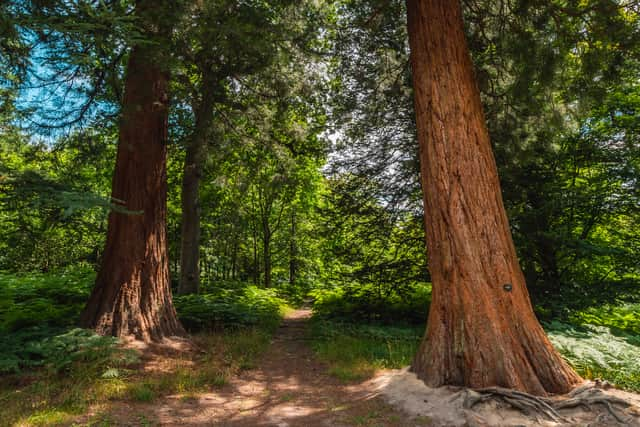Giant sequoias: One of the world's biggest trees is thriving in the UK - more so than its native California
and live on Freeview channel 276
America's famous giant redwoods may be declining as California heats up, but a new study has found they are thriving in the UK - and have adapted well to its significantly wetter weather.
The new research from University College London (UCL) and the Royal Botanic Gardens at Kew, published on Wednesday (13 March) in the Royal Society Open Science journal, found that the UK's giant sequoia trees grow at similar rates to those in their native range - despite entirely different weather systems and ecologies. They also found they could have big implications for Britain's own fight against climate change, with the enormous trees able to capture large amounts of carbon as they grow.
Advertisement
Hide AdAdvertisement
Hide AdThere are an estimated half a million giant sequoias growing across the UK. In the wild they are endangered, with fewer than 80,000 left in their native home - California's Sierra Nevada mountains. They were first brought over 160 years ago, but this is the first time the trees’ growth rate and resilience in Britain have been analysed.
While not quite the world's tallest trees - an honour which goes to their close cousins, the coastal redwood - giant sequoias can grow up to 90 metres tall, and will keep growing throughout their 3,000-plus year lives. However, their trunks grow incredibly wide, making them the world's heaviest trees.


Senior author, UCL geography professor Mat Disney, said more and more giant sequoias were being consistently planted in the UK, and it was important to know what that could mean in the future. "The history of these trees in Britain is fascinating - initially as symbols of wealth and power, through to now being widely planted in parks and woodlands. They are iconic, but there is almost no work on how fast they grow or how well they will do in the UK's changing climate. I find it amazing to see these giants dotted across the landscape and see how rapidly they are growing."
The research team mapped more than 5,000 of them across the UK, and visited three groves - at the Kew Botanic Gardens in Sussex, Havering Country Park in Essex, and Benmore Botanical Garden in Scotland. There, they used lasers to scan them in 3D, to get a highly accurate picture of their heights and weights, without harming them.
Advertisement
Hide AdAdvertisement
Hide AdThe tallest tree they found measured just shy of 55 metres - a giant compared with most native UK species, but dwarfed by its American counterparts. This is in part because of the UK sequoias’ youth, with the UK's oldest giant sequoia, at Benmore, first one planted in 1863.
The scientists used their volumes, heights, and ages to calculate how fast they were growing in Britain. They found that the trees at Kew and Benmore grew at similar rates to their US counterparts, although growing slightly taller and slimmer at the latter, while at Havering the trees grew more slowly - likely due to less rainfall in the region and competition from dense local woodland.
Professor Disney said the results gave them an important baseline for estimating how well giant sequoias were doing in the UK climate. "Currently, these trees are probably more important for their aesthetic and historical interest than they are for solving the climate crisis," he added.
However, the study also found that they can potentially pull an average of 85 kilograms of carbon out of the atmosphere per year - which might become important as they continue to grow. Lead author Ross Holland said that giant sequoias make up some of "the most carbon dense forests in the world" in their native habitat, due to their great age.
Advertisement
Hide AdAdvertisement
Hide Ad"We found that UK redwoods are well adapted to the UK and able to capture a large amount of carbon dioxide. We hope that these findings can help guide decisions on future tree planting and management," he continued.
But the researchers emphasised that the most effective way to mitigate climate change was still by reducing carbon emissions from burning fossil fuels. Trees can help by absorbing some of the carbon produced, as well as by offering other important climate, ecosystem and wellbeing benefits.
Amber Allott is NationalWorld’s environment and sustainability specialist, covering all things green - from climate to conservation. If you liked this article you can follow Amber on X (Twitter) here and sign up for the free daily NationalWorld Today newsletter here - with Amber bringing you the UK's most important, pressing, weird and wonderful environmental stories every Tuesday.
Comment Guidelines
National World encourages reader discussion on our stories. User feedback, insights and back-and-forth exchanges add a rich layer of context to reporting. Please review our Community Guidelines before commenting.
